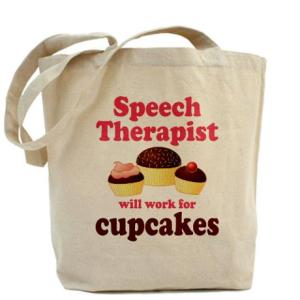Disclaimer: This post is going to be information-heavy. Traumatic Brain Injury is a topic that has been stuck in my mind for a while. These injuries are preventable and can be life-altering. Always be safe and take every precaution you can to protect yourself.
The Traumatic Brain Injury
Traumatic Brain Injury, or TBI, is a serious topic. The Centers for Disease Control and Prevention (CDC) explains, “A TBI is caused by a bump, blow or jolt to the head or a penetrating head injury that disrupts the normal function of the brain (CDC).” TBIs range in severity from mild to severe; it is situational. According to the CDC TBI is a “serious public health problem in the U.S. Each year, traumatic brain injuries contribute to a substantial number of deaths and cases of permanent disability. Every year, at least 1.7 million TBIs occur either as an isolated injury or along with other injuries (CDC).”
There are two main types of TBI — penetrating injuries and closed head injuries. Penetrating injuries involve a foreign object entering the brain and causing damage to every area it touches as it travels through the brain. An example of a penetrating head wound that is regularly talked about in psychology classes is Phineas Gage, who had a railroad tamping iron driven completely through his skull. A closed head injury, on the other hand, occurs when there is a blow to the head without a foreign object entering the brain. An example of a closed head injury is a car accident victim hitting their head on the dashboard or windshield. Closed head injuries result in two types of brain damage — primary brain damage and secondary brain damage.
Primary brain damage is what occurs at the moment of impact, which may include:
- skull fracture(s)
- contusions/bruises
- hematomas/blood clots
- lacerations
- nerve damage
Secondary brain damage is damage that develops after the trauma over a period of time, which may include:
- brain swelling (edema)
- intracranial pressure (increased pressure inside of the skull)
- epilepsy
- intracranial infection
- fever
- hematoma
- low or high blood pressure
- low sodium
- anemia
- too much or too little carbon dioxide
- abnormal blood coagulation
- cardia changes
- lung changes
- nutritional changes
(ASHA)
After the Injury
Communication
After a brain injury people often have trouble thinking (cognition) and communicating. “Brain injury survivors may have trouble finding the words they need to express an idea or explain themselves through speaking and/or writing. It may be an effort from them to understand both written and spoken messages, as if they were trying to comprehend a foreign language. They may have difficulty with spelling, writing, and reading, as well… Individuals may seem overemotional (overreacting) or ‘flat’ (without emotional affect)… In general, communication can be very frustrating and unsuccessful (ASHA).”
Behavioral, Emotional, and Personality Changes
People with a TBI experience a lot of changes, externally and internally. In most cases there are emotional, behavioral, and personality changes after the injury. So I don’t completely bore you I will provide you a link to the information, so you could look at it if you’re interested. The Missouri Department of Health and Senior Services and the University of Missouri Department of Health Psychology collaborated in the effort to put together The Brain Injury Guide and Resources. This website has tons of helpful information, but the page I specifically linked to is about the emotional, behavioral, and personality changes a person experiences after a TBI. It also includes strategies for the injured person and for others on how to deal with the changes.
Cognitive Problems
A Traumatic Brain Injury is just like it says — traumatic. Cognitive problems (thinking) are common after a TBI. Each TBI is different in regards to location and severity, therefore the combination of cognitive problems ensuing are unique to each individual. They might include:
- trouble concentrating when there are distractions
- slower processing or “taking in” of new information
- problems with recent memory. New learning can be difficult. Long-term memory for events and things that occurred before the injury, however, is generally unaffected (e.g., the person will remember names of friends and family).
- executive functioning problems. The person may have trouble starting tasks and setting goals to complete them. Planning and organizing a task is an effort, and it is difficult to self-evaluate work. Individuals often seem disorganized and need the assistance of family and friends. They also may have difficulty solving problems, and they may react impulsively (without thinking first) to situations
(ASHA)
The Speech Therapist and TBI
A speech therapist will evaluate the individual for speech and swallowing difficulties that stem from the brain injury. After the evaluation the speech therapist will develop a treatment plan that is unique to each person. The treatment plan will follow this general progression:
- In the early stages of recovery (e.g., during coma), treatment focuses on:
- getting general responses to sensory stimulation
- teaching family members how to interact with the loved one
- As an individual becomes more aware, treatment focuses on:
- maintaining attention for basic activities
- reducing confusion
- orienting the person to the date, where he/she is, and what has happened
- Later on in recovery, treatment focuses on:
- finding ways to improve memory (e.g., using a memory log)
- learning strategies to help problem solving, reasoning, and organizational skills
- working on social skills in small groups
- improving self-monitoring in the hospital, the home, and the community
- Eventually, treatment may include:
- going on community outings to help the other person plan, organize, and carry out trips using memory logs, organizers, checklists, and other helpful aids
- working with a vocational rehabilitation specialist to help the person get back to work or school.
- Individual treatment may continue to improve speech, language, and swallowing skills, as needed.
(ASHA)
That’s the ramble for now.

